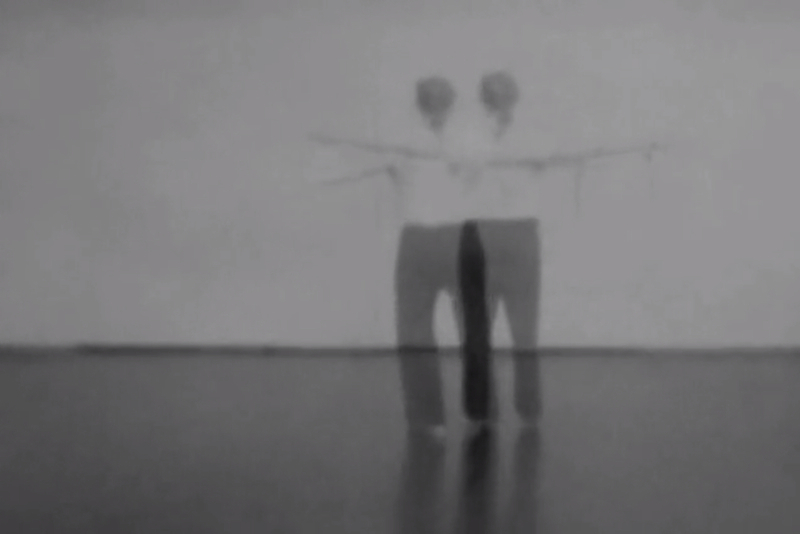Victoria Fu, Five Attempts at a Palindrome (2-minute excerpt), 2010; b/w Super 8mm film transferred to video; RT 5:15. Courtesy the artist.
In Three Dialogues, Samuel Beckett wrote, “To be an artist is to fail, as no other dare fail.” Beckett had firsthand knowledge of this condition. The Irish writer’s first novel was rejected forty-two times and published only posthumously in 1992. Failure permeates the lives of authors and artists, and for some it is even a strategy.
The San Diego-based artist Victoria Fu says, “Failure as strategy is a nod to the delicate beauty and also complete absurdity of making.” Fu believes that failure is synonymous with vulnerability. To talk about personal and professional inadequacy beyond banal platitudes is to give words to the murky, undefined parts of an artist’s practice. Fu has accepted the necessary pain of unrealized expectations and approaches it as an extremely valuable facet of her practice. By eschewing perfection, Fu favors experimentation, and in doing so, she invites the unexpected.
Working predominantly in video, Fu thinks that it is a medium especially prone to fiasco. Fu frequently uses analog film such as Super 8, and she likes her actors to work without scripts whenever possible, even though it makes her uncomfortable. As a result, Fu will shoot the same scene dozens of times before she finds the right take. Before this perfect shot is captured, all the preceding shots are trashed. “Even in tightly planned and scripted shoots, each discarded take is a failed attempt,” said Fu. Her videos are full of hidden flops, but the omitted takes are never seen by anyone but her.
Fu’s objective for her 2010 video titled Five Attempts at a Palindrome was to make the shortcomings of her medium apparent. Fu said, “Things are maybe not as interesting if they are whole, virtuosic, fully realized.” As the title suggests, she wanted to create a filmic palindrome (a word or phrase that reads the same backwards and forwards), but Fu knew that it would be impossible to flawlessly execute her ambition. Her goal for the film was to attempt the unattainable, and the work was designed to flounder precisely five times.

Victoria Fu, Five Attempts at a Palindrome, 2010; b/w Super 8mm film transferred to video; RT 5:15. Courtesy the artist.
To create Five Attempts, Fu collaborated with the Swedish performer Matilda Lidberg to choreograph a sequence of movements. Lideberg’s path was traced on the floor in tape, and Fu filmed as she counted aloud. At an imaginary center point, Lideberg stopped and retraced her movements backwards, like a film played in reverse. Fu later edited and layered Lideberg’s movements in the studio. In each of the five short videos, two Lidebergs are superimposed. Lideberg moves as her ghost follows the same sequence of movements, which were performed backwards. The different takes and slight aberrations in Lideberg’s choreography are conflated into the same scene. The palimpsest of Lideberg’s dance functions like an imprecise palindrome played out in space.
Fu looped Lideberg’s choreography, and over time her movements appear less exact. The video is an illustration of a futility that is slow and calculated. Lideberg’s movements are inaccurate but deliberate. More than a palindrome, the video makes visible the vulnerability that accompanies all the fruitless efforts of an artist. The shadows never harmonize, but their lack of alignment and the seeming vibrations between the forms beget a gesture that is precarious. Fu’s work evinces the grace of strategic failure.



